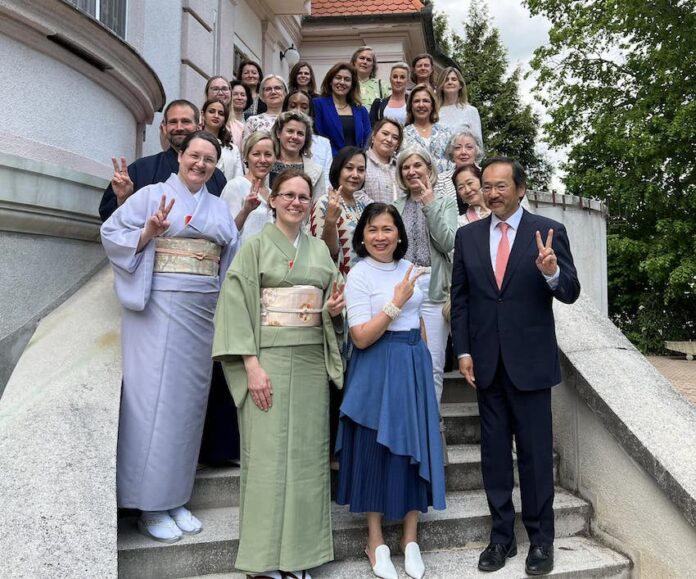Edited by Anna Popper
Experiencing a tea ceremony gives a glimpse into a fascinating part of vibrant Japanese culture, which has rich history, diverse aspects and cultural significance, blending ancient tradition and modernity.
It was a privilege and a great pleasure to attend a traditional Japanese tea ceremony, called “Chado”, at the invitation of H.E. Masato Ohtaka, Ambassador of Japan to Hungary, held at the Ambassadorial residence in Budapest on 4 May 2023, the eve of the annual celebration of Boys Day, also known as Children’s Day in Japan.

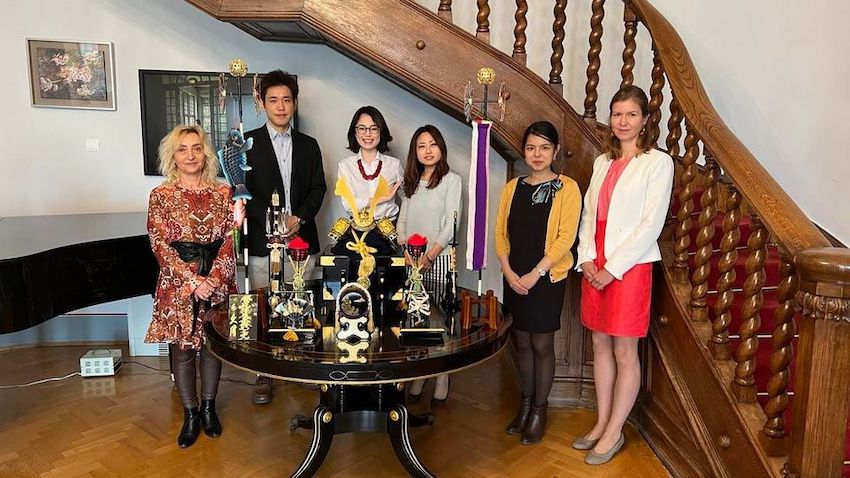
As part of his diplomatic activities, the Head of Mission pays great importance also to cultural diplomacy during his tenure in Hungary, which contributes significantly to further developing the friendly and multifaceted relationship between Japan and Hungary, which have been built up over more than 150 years of diplomatic relations.
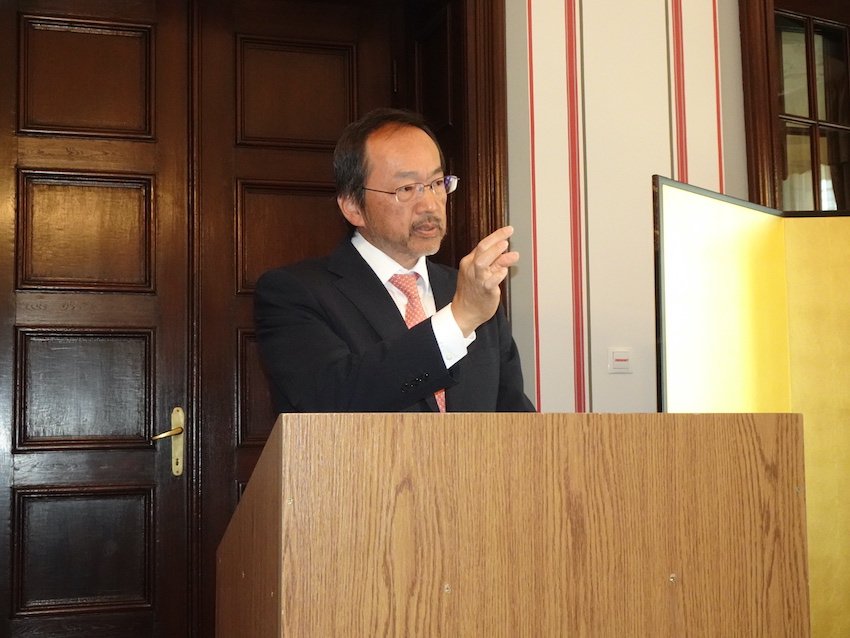
The guests of the event were exclusively female, including the members of the Diplomatic Spouses of Budapest (who organise the Diplomatic Charity Fair every year with devotion and commitment to a good cause), as well as the Ambassador’s friends interested in Japanese culture. They were warmly welcomed by the Ambassador, who is a true fan and respected connoisseur of arts: music, opera, ballet, painting, plastic art and architecture, he is endowed with incredible knowledges about all of this.








The tea ceremony demonstration started with the opening remarks of the Ambassador, introducing the Urasenke Tankokai, one of the most famous “way of tea” schools in Japan, and praising the Urasenke school in Hungary as an official branch. He also talked about the philosophy behind the Chado, the way of tea and its practice. Chado focuses on the guest as the centre of Japanese hospitality, respect and politeness, with the concept that the host and guest share a mutually heart-warming and memorable time together in an impeccable environment over a bowl of matcha tea, as a once in a life occasion.
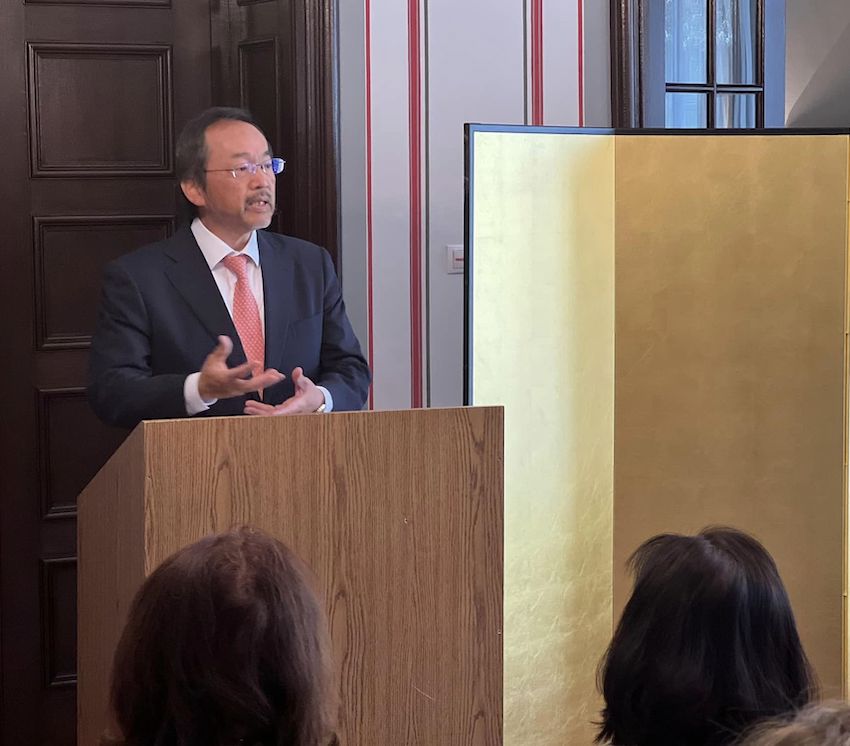
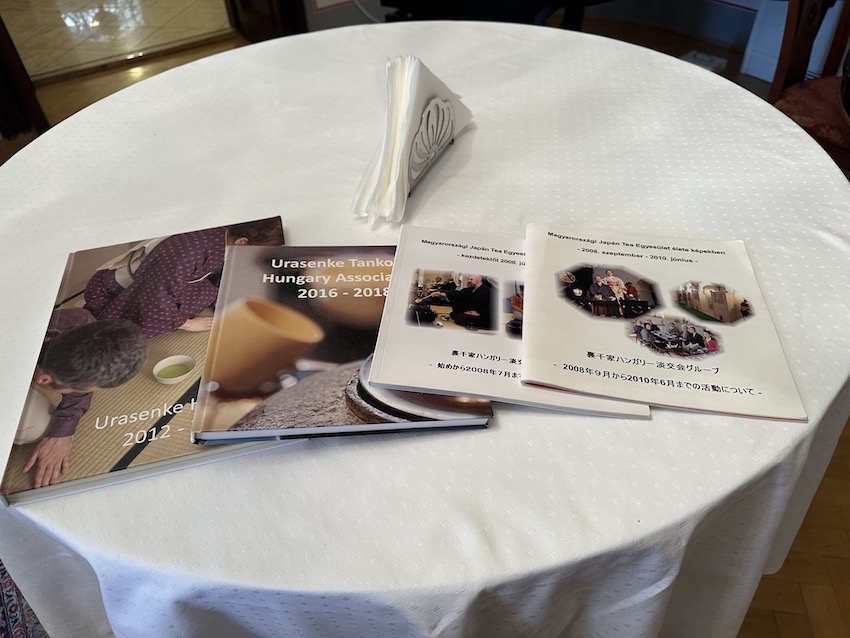
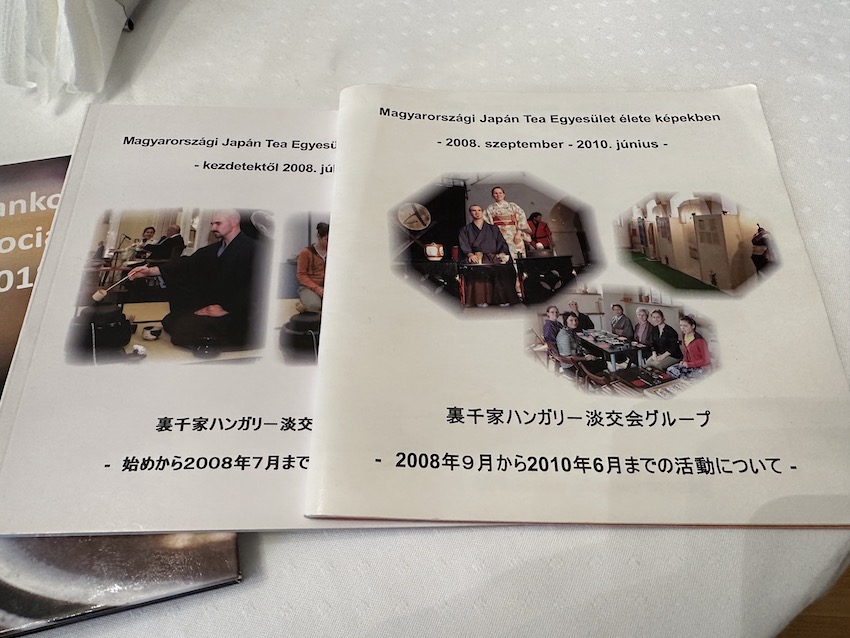
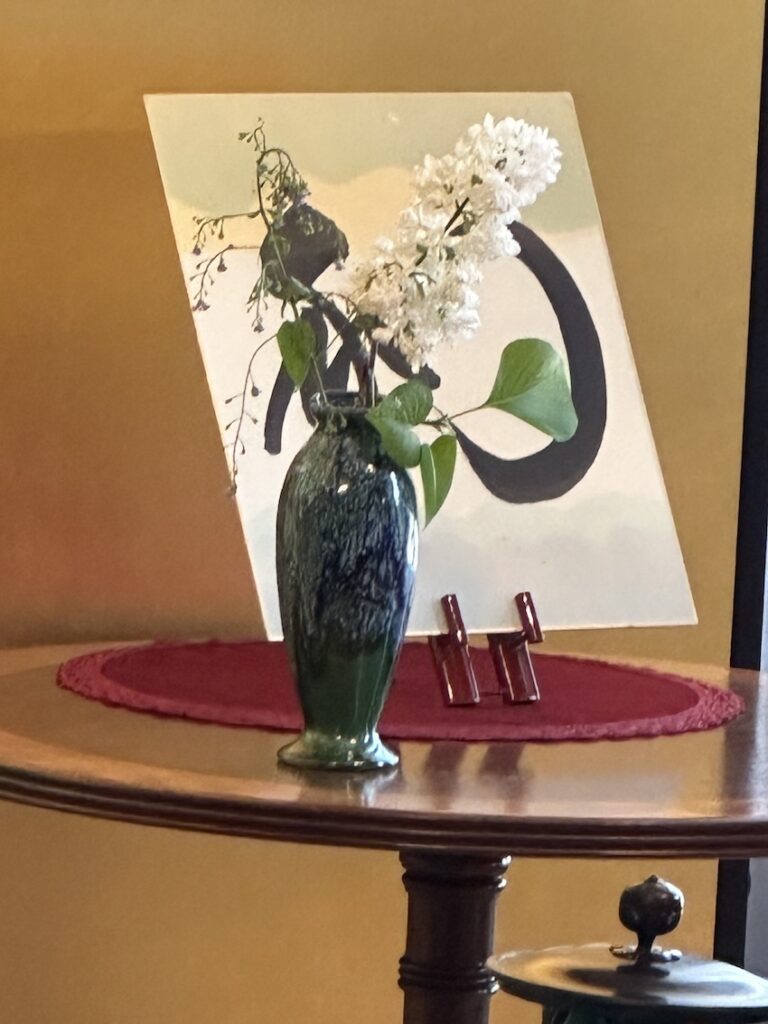
Mrs. Kornélia Rajzó-Kontor, President of Urasenke Tankokai Hungary, an outstanding and dedicated Tea Master with great knowledge and experience, a recognised Hungarian expert moderated the tea ceremony. She has been working with tea for more than two decades and mastered the art of tea in Japan, which she first visited at the age of 17. Today she feels very honoured and proud to be one of the 400 tea masters around the world, but in her opinion it takes a lifetime to master.


The attendees learned that the tradition of the Japanese tea ceremony is linked to Buddhism and dates back to the 9th century. Green tea was brought to Japan by a Buddhist monk from China in 805, where green tea was used in religious rituals at Buddhist monasteries. In Japan, it became a status symbol and began to evolve its own way and aesthetic. Today, Japanese green tea is highly valued as a precious medicine for health and longevity. Far more than just a hot drink, tea in Japan is an integral part of Japanese culture.



The Tea Master explained that the tea ceremony is a very important ritual with many meanings, symbols, rules and traditions in its culture. Speaking in details about the philosophy of the Way of Tea, which represents four elements: Purity, Tranquillity, Respect and Harmony, and a lot of preparation goes into this important event, which is a slow and profound spiritual process that brings inner peace to the guests deeply rooted in Zen philosophy. She showed the proper setting and the objects that play a major role at the ceremony: the bowls (without handles to feel the tea temperature and the texture of the ceramic cup) and other special utensils, and explained how they can be used and appreciated, then how to pick up the bowl and how to drink the tea, how the master and the main guest can communicate during the ceremony only with silent bowing, and after what is green tea powder (matcha), and the ideal water temperature. The tea etiquette is vital, with subtle rules, for both the host and the guest (and if you can make a slurping sound).






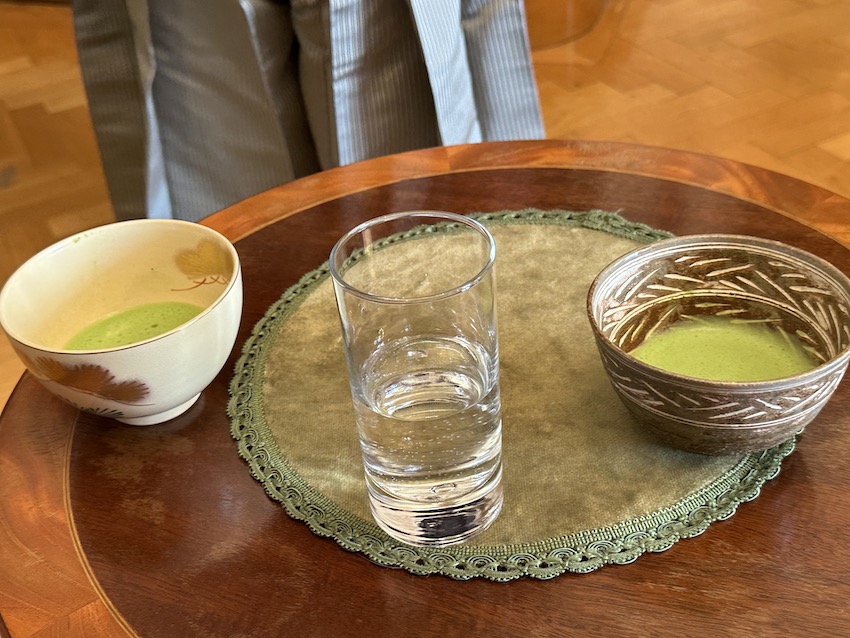


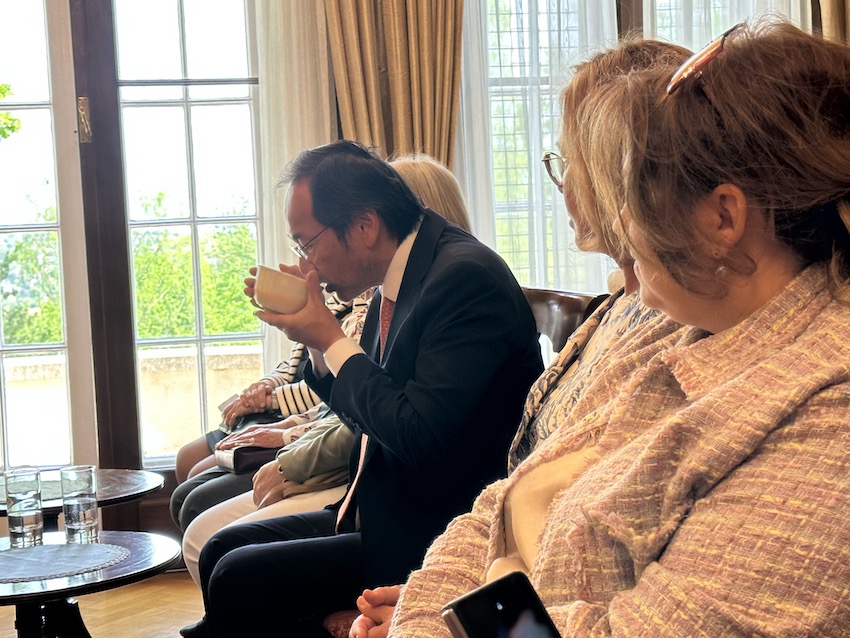




The tea ceremony requires the simultaneous use of all five senses and needs concentration. Many more important elements and symbols of the ritual were mentioned, such as finding an occasion to dedicate the ceremony, creating beauty with floral arrangements, calligraphies, decorations and prestige seating for the guests.
The very authentic and tasty Japanese sweets that were served and eaten before tea, according to the rule (since Japanese tea is not sweetened), were also made by the Urasenke group.

The concept of “Wabi” and “Sabi”
One of the main ideas behind the Japanese tea ceremony is the concept of “Wabi” and “Sabi”. “Wabi” represents the spiritual experiences of human life and symbolises quiet and sober refinement. “Sabi” represents the material side of life and means weathered or decayed. Understanding this emptiness and imperfection is considered an important part of spiritual awakening.
The guests appreciated the invitation to this very special event and the generous hospitality of H.E. Masato Ohtaka, Ambassador of Japan. Apparently, they understood and enjoyed the message of the way of tea, a strong symbol of Japanese culture that shaped the Japanese aesthetic views.
The presentation inspired many questions, expressing the interest of the ladies present, and the function ended with a lunch serving specialties of great Japanese gastronomy, prepared for the occasion.
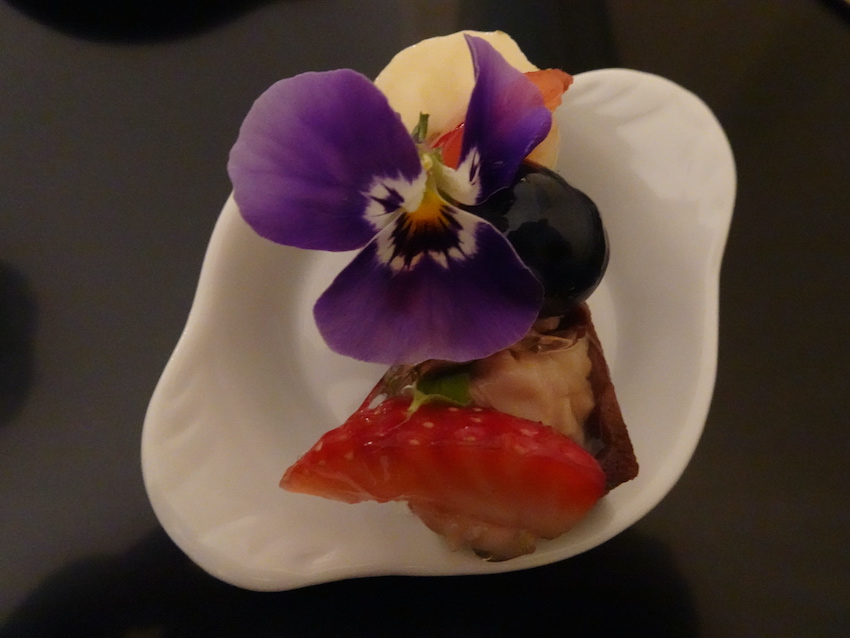
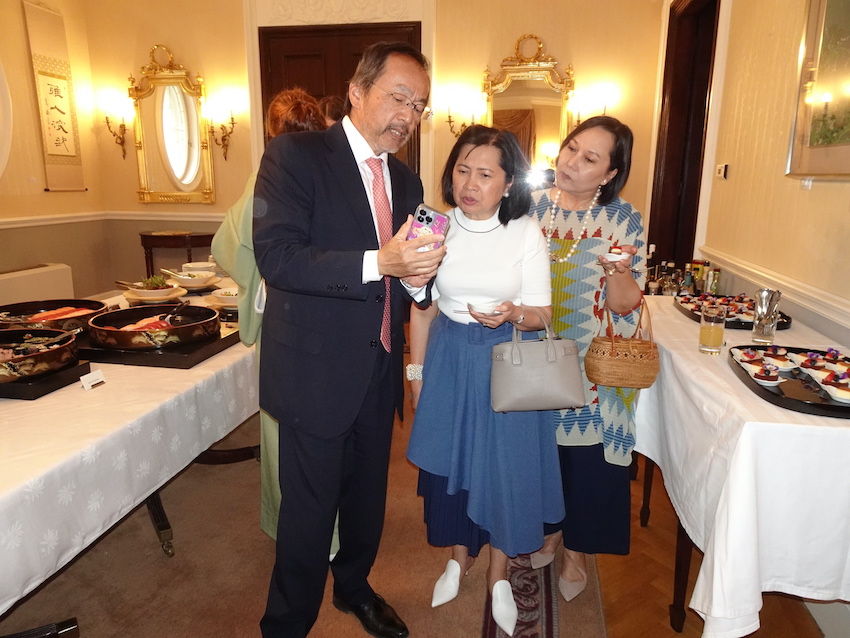
Your Excellency, I would like to express my honour and gratitude for this memorable experience.
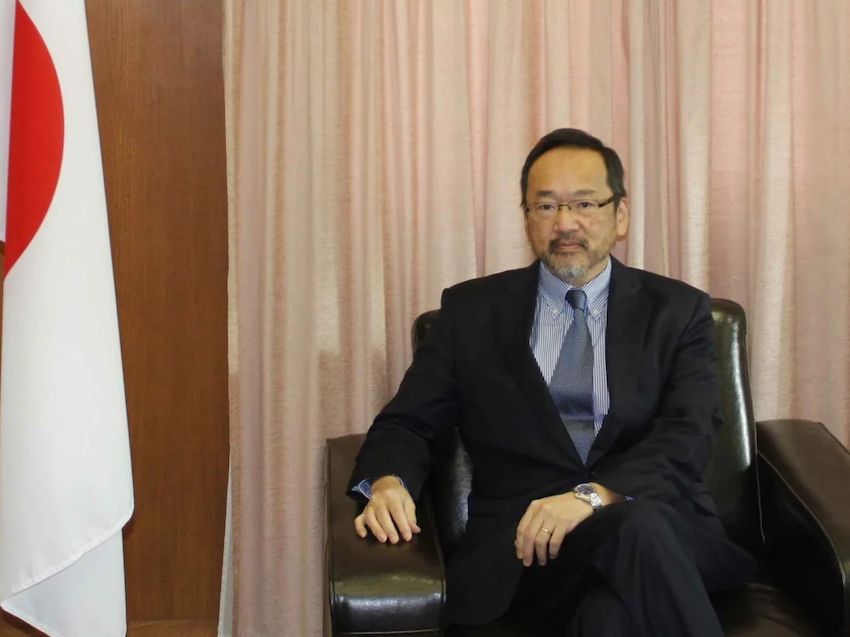
Source: Embassy of Japan in Budapest





